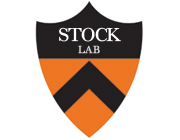Mechanism of phosphatase activity in the chemotaxis response regulator CheY.
Publication Year
2003
Type
Journal Article
Abstract
Response regulator proteins are phosphorylated on a conserved aspartate to activate responses to environmental signals. An intrinsic autophosphatase activity limits the duration of the phosphorylated state. We have previously hypothesized that dephosphorylation might proceed through an intramolecular attack, leading to succinimide formation, and such an intramolecular dephosphorylation event is seen for CheY and OmpR during mass spectrometric analysis [Napper, S., Wolanin, P. M., Webre, D. J., Kindrachuk, J., Waygood, B., and Stock, J. B. (2003) FEBS Lett 538, 77-80]. Succinimide formation is usually associated with the spontaneous deamidation of Asn residues. We show here that an Asp57 to Asn mutant of the CheY chemotaxis response regulator undergoes an unusually rapid deamidation back to the wild-type Asp57, supporting the hypothesis that the active site of CheY is poised for succinimide formation. In contrast, we also show that the major route of phosphoaspartate hydrolysis in CheY occurs through water attack on the phosphorus both during autophosphatase activity and during CheZ-mediated dephosphorylation. Thus, CheY dephosphorylation does not usually proceed via a succinimide or any other intramolecular attack.
Keywords
Aspartic Acid,
chemotaxis,
Bacterial Proteins,
Molecular Sequence Data,
Amides,
Membrane Proteins,
Phosphoproteins,
Amino Acid Sequence,
Salmonella typhimurium,
Phosphoric Monoester Hydrolases,
Hydrolysis,
Chromatography, High Pressure Liquid,
Succinimides,
Methyl-Accepting Chemotaxis Proteins,
Asparagine,
Enzyme Stability,
Isoelectric Focusing,
Oxygen Isotopes,
Phosphorus Radioisotopes
Journal
Biochemistry
Volume
42
Issue
47
Pages
14075-82
Date Published
12/2003
ISSN Number
0006-2960
Alternate Journal
Biochemistry
PMID
14636076

